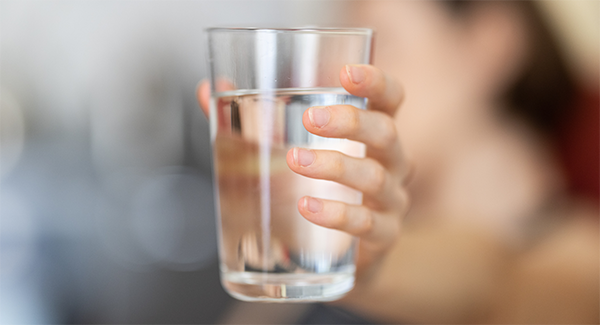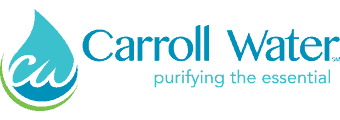In the mid-Atlantic region, many communities are becoming increasingly concerned about the quality of their tap water due to local reports of water contamination in both public systems and wells. These concerns are not just about taste or clarity, but also potential health risks. Such issues underscore the importance of ensuring that their water source is safe and reliable. This demand for safe water extends beyond drinking; it involves all types of water used in the home or business: cleaning, washing clothes, bathing, cooking, and even pet care.
This guide will outline important factors that homeowners, businesses, or group living communities can consider as they actively seek solutions to mitigate any potential risks from contaminants in their local water supply.
One of the top solutions presented in this guide is the importance of a reverse osmosis system in addressing the variety of water contaminants.
Naturally Occurring Contaminants
- Salts and Minerals: Sodium, Calcium, Magnesium, Potassium
- Heavy Metals: Lead, Mercury (Elevated levels in water often result from human activities)
- Radioactive Substances: Radionuclides such as radium and radon
- Biological Contaminants: Microorganisms like bacteria, viruses, parasites
- General Water Quality Indicators: Total Dissolved Solids (TDS)
- Nutrients and Chemicals: Sulfate
Harmful Created Contaminants
- Disinfectants and Byproducts: Chlorine, Chloramine, and their byproducts
- Organic Compounds: Pesticides, Herbicides, Volatile Organic Compounds (VOCs), Pharmaceuticals
- Chemicals Added for Treatment or from Industrial Runoff: Fluoride, Nitrate & Nitrite, Perfluorinated Chemicals (PFCs), PFAS/PFOS
8 Reasons a Reverse Osmosis System is Important
There has been a growing concern about various water issues, such as lead contamination, the presence of harmful pesticides, high levels of fluoride, and unexpected spikes in total dissolved solids (TDS). These challenges underscore the significance of having a reliable water purification method in place.
A reverse osmosis (RO) system emerges as a front-runner in addressing these concerns. This water purification technology utilizes a semipermeable membrane to reduce ions, molecules, and larger particles from drinking water.

There are 8 reasons an RO system is important based on the application, water source, and individual needs:
- Improved Water Quality – RO systems effectively reduce contaminants like lead, fluoride, chlorine, and other harmful substances, providing cleaner and safer drinking water.
- Taste and Odor – Water treated with RO systems often tastes better and lacks the chlorine or metallic tastes that tap water might have. It also reduces any odors present in the water.
- Removal of Sodium – While softeners reduce calcium and magnesium from water by exchanging them with sodium, RO systems further reduce these sodium ions, making it a great solution for those on a low-sodium diet.
- Safe from Contaminants – RO systems can reduce contaminants like pesticides, nitrates, and sulfates. They also filter some bacteria, viruses, and other microorganisms, reducing the risk of waterborne diseases.
- Cost-Efficient – In the long run, having an RO system can be more cost-effective than constantly buying bottled water.
- Environmental Impact – Utilizing reverse osmosis (RO) systems diminishes our reliance on bottled water, directly contributing to a reduction in plastic bottle waste. This shift not only curtails plastic pollution but also fosters a more sustainable approach to water consumption.
- Consistent Quality – Regardless of the quality fluctuations in the source water, RO systems provide consistent water quality.
Do I Need an RO System if I’m on Public Water?
Whether or not you need a reverse osmosis (RO) system while being on city water depends on several factors. City water is treated to meet federal and state regulatory standards, but these standards may not always align with individual preferences or concerns.
Carroll Water clients frequently mention these concerns:
Quality of Public Water
While public water undergoes treatment by municipalities to meet government standards, periodic contaminant breaches or major water issues like the Flint, Michigan lead crisis can occur. Most recently a notice of parasite contamination for Maryland residents was issued by the Baltimore City Department of Public Works (DPW) and the Baltimore City Health Department (BCHD). In this instance, reverse osmosis systems are the most ideal solution since it’s too cumbersome to constantly boil water for drinking and use in daily activities.
If you’re concerned about what is in your public water source, you can regularly check the EPA’s Consumer Confidence Report (CCR) to use the online search tool for your local area. The report can provide the latest test results and insights into the quality of your city’s water.
Taste and Odor
Water supplied by municipalities, often referred to as city water, undergoes a disinfection process where chemicals like chlorine or chloramine are added. While these chemicals are vital for ensuring water safety by eliminating harmful pathogens, they can also introduce an undesirable taste or odor to the water. RO systems are the best solution to resolving this issue.
Specific Contaminant Concerns
Some people are concerned about specific contaminants that might not be entirely removed by city water treatment facilities, such as certain heavy metals, pesticides, or pharmaceuticals. RO can provide an added layer of purification against these contaminants.
Fluoride
Many city water supplies add fluoride to promote dental health. However, some people prefer to purify fluoride from their drinking water, either due to health concerns or personal preferences. RO systems can effectively reduce fluoride.
Individual Peace of Mind
For those who want extra assurance about the purity of their drinking water, an RO system offers an added layer of protection against potential contaminants, even if the city water meets all regulatory standards.
How does a Reverse Osmosis System Work?
Reverse osmosis systems work in a variety of ways. There may be some systems with additional stages or components to address specific water quality issues. The basic process can be broken down into six stages:
1. Pre-filtration
Before water reaches the RO membrane, it passes through a series of pre-filters.
Sediment Filter – This is the first stage, which helps filter out larger particles like dirt, silt, and sand. This not only improves the quality of the water but also protects and extends the life of the RO membrane from possible damage by these particles.
Carbon Filter – In the next stage, water flows through an activated carbon filter. This filter reduces chlorine and other contaminants that can give the water an unpleasant taste or odor. Chlorine is especially important to reduce at this stage as it can degrade the RO membrane over time.
2. Reverse Osmosis Filtration
When water reaches the RO membrane, this is where the primary purification happens. The water is forced under pressure through the semipermeable membrane, which has tiny pores. These pores allow water molecules to pass through but are small enough to block most contaminants, including salts, minerals, heavy metals, and some organic compounds. As a result, almost all contaminants are left behind and flushed away, and only purified water passes to the next stage.
3. Post-filtration Polishing Carbon Filter
After the RO process, the water typically flows through another activated carbon filter. This “polishing” step ensures that any remaining taste or odor contaminants are reduced, delivering fresh-tasting, clean water.
4. Storage
Because the RO process can be slow, the purified water is usually stored in a pressurized tank to ensure there’s a sufficient amount available on demand.
5. Flow Restrictor and Drain Line
An essential component of an RO system is the flow restrictor and drain line. They maintain the necessary pressure across the membrane and reduce the wastewater containing the filtered contaminants. For every gallon of purified water produced, an RO system typically discharges 2-3 gallons (or more, depending on the system and local water conditions) of wastewater.
6. Final Delivery
When a faucet connected to the RO system is opened, the purified water from the storage tank passes through the post-filter for a final polish before being delivered for consumption.
Frequently Asked Questions
Does Reverse Osmosis Water Filtration Waste Water?
Yes, reverse osmosis systems do produce wastewater. For every gallon of purified water, an RO system may discharge 2-3 gallons of wastewater. However, our EcoWater Reverse Osmosis HERO or ERO 385 System we install is optimized to have a 1:1 ratio of wastewater to purified water.
Can You Use a Reverse Osmosis System with a Water Softener?
Yes, you can use a reverse osmosis system in conjunction with a water softener. In fact, if you have hard water, pairing an RO system with a water softener can extend the lifespan of the RO membrane by preventing scale buildup.
How to Care for Your Reverse Osmosis System?
To care for your RO system:
- Regularly change the filters as recommended by the manufacturer (typically every 6-12 months).
- Replace the RO membrane every 2-3 years or as indicated by declining water quality.
- Regularly inspect for leaks or malfunctions.
- Sanitize the system and storage tank annually.
- Monitor the quality of the output water to ensure the system is working effectively.
How Do I Get an RO system?
Obtaining a reverse osmosis (RO) system is easy when you work with an expert water technician like Carroll Water. We offer free water testing, which will help identify the contaminants you need to filter out. Call us today to get the peace of mind that your water supply is free of contaminants.


